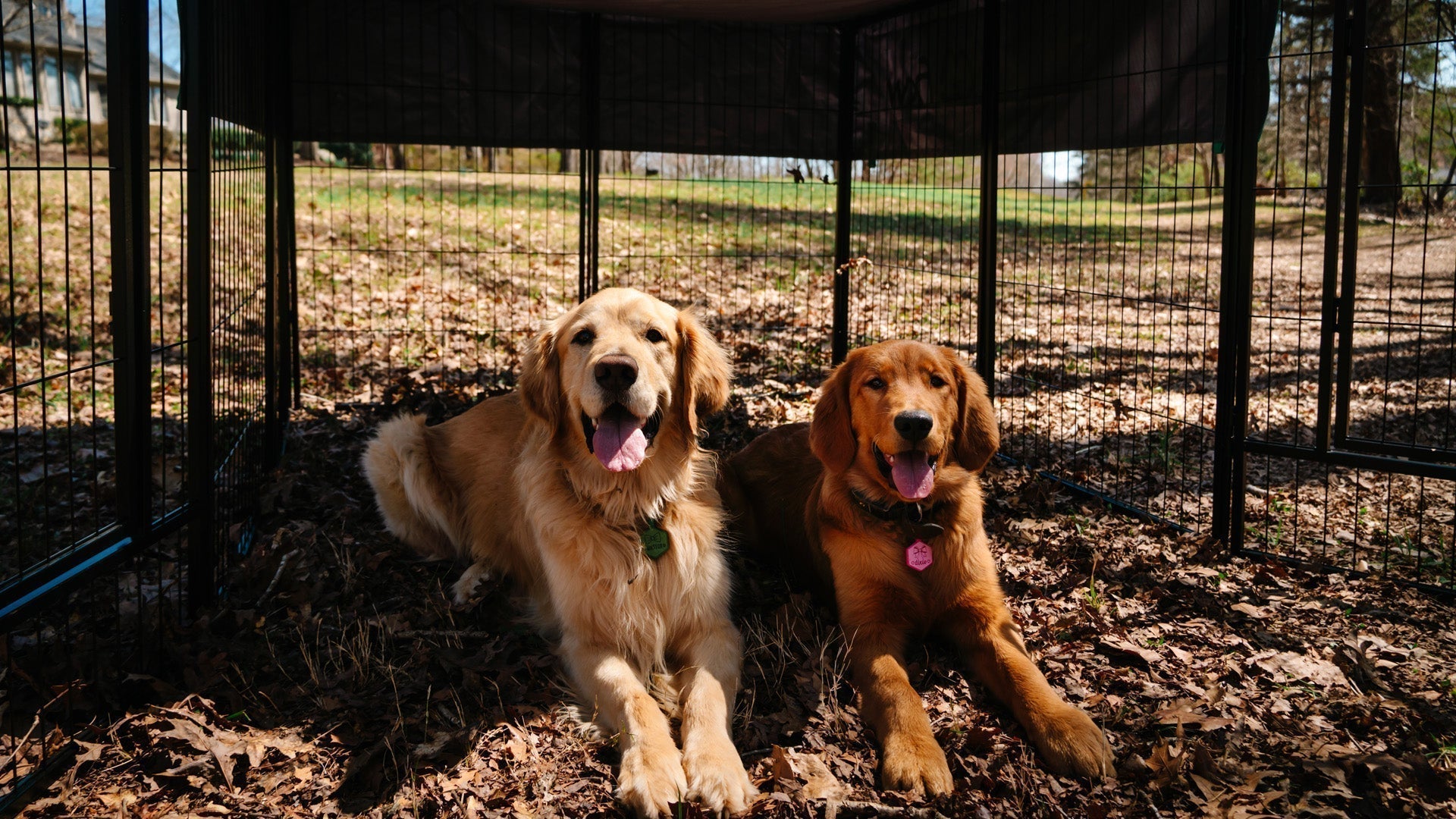1. Introduction
If you have a dominant dog and intend to get a puppy, then it is important to know the puppy introduction techniques that will help keep the puppy and the dominant dog in harmony. Dogs with dominant characteristics can be quite behaviorally aggressive, making the introductions tense, therefore, having a plan makes introductions easier. A proper introduction process allows the two dogs to trust each other without feeling any tension. In this article, we will discuss how an adorable puppy can overcome an intimidating parent without any issues.
2. Understanding Dominant Dog Behavior
Every dog has certain characteristics and traits that dominate their behavior; body postures, aggressive tendencies towards territory, and protective traits are the most obvious ones. These actions might affect the dog-puppy relationship, especially if there is an already established dominance from a mature dog. Such behavior is evident in the form of growling, resource guarding, or any other form of control. In any case, one must understand that the introduced dominant character makes everything harder to negotiate so that circumstances do not impede the quality of that meeting. Know how to expose a puppy to adult dominant dogs with appropriate strategies in line with their behavioral characteristics.
3. Preparing for the Introduction
When learning how to introduce an alpha dog to a new puppy, you must remember that you will have a greater chance of success if you prepare well. Understand the characteristics of your dog and prepare your puppy with some basic commands. Set up a place for the two dogs that is not within their territorial boundaries and where you will have the necessary equipment such as leashes, dog treats, or calming equipment. This approach will ensure that both dogs are quite sure of their security, thereby reducing the tension in their interactions. Lay out a proper plan on how you will handle introducing the new puppy to an older, more dominant dog.
4. Step-by-Step Guide to the First Meeting (AKC)

- Put a leash on both so you can control both.
- Start with a distance between them. Let the two dogs get familiar with the scent of the other.
- Always keep a keen eye on their expressions, especially aggressive ones.
- Always reward calm, let them have a treat and praise them for being quiet.
- Always separate them after a short period and assist the new puppy in growing stronger alongside the dominant dog. Repeat the last step and make the sessions longer as required.
- To enhance comfort following introductions, you might use the FXW TitanNest Chew-proof Dog Bed. Its solid and cave-like design gives a place for your pets to calm down after these sessions.
5. Managing the Home Environment
As owners learn how to introduce a puppy to a dominant dog, they should correctly structure this new home. Set some limitations by using baby gates or crates to restrict the dogs to certain areas. The areas that need to be shared should be controlled and introduced slowly enough so that play and pet interaction happens only when necessary. Including the Chew-proof Dog Bed in their corners gives them an ideal and effective place to rest, and provides more safety with limited chances of space invasion. (AKC)
6. Building Positive Associations
As owners learn how to introduce a puppy to a dominant dog, they should correctly structure this new home. Set some limitations by using baby gates or crates to restrict the dogs to certain areas. The areas that need to be shared should be controlled and introduced slowly enough so that play and pet interaction happens only when necessary. Including the Chew-proof Dog Bed in their corners gives them an ideal and effective place to rest, and provides more safety with limited chances of space invasion.
7. Recognizing and Resolving Conflicts
Behaviors such as growling and resource guarding may begin when a puppy is put with an older dominant dog. When things begin to heat up, separate the dogs and try to see what the cause is. Watch out for warning signs such as snapping, lunging, and excessive guarding behavior. Professional help can provide strategies that are appropriate for your pets and hence ensure that the introduction is safer. Proper supervision lessens the hurdles that are bound to be encountered during this process. (PetMD)
8. Long-Term Strategies for Peaceful Coexistence
When both dogs are accustomed to a regular pattern, a lasting peace in the house where they reside is possible. Attention, food, and resources should be evenly distributed to avoid jealousy. Good manners should also be trained and reinforced. In this way, order is created and dogs can get along peacefully. When integrating an alpha dog into a home with a puppy, it’s critical to consider the long-term plan to ensure their bond only becomes greater with time.
9. Special Considerations

Increasing a pup's encounter with older canines that are already set in their ways can test one's patience. Certain breeds have distinct traits, which also determine how they interact with one another. Size differences tend to be a hindrance, so for playtime, more gentle activities may have to be initiated to ensure safety. Shaping your techniques based on your pet's requirements and ease in the introduction and later stages is easier. These issues should be considered if a person is looking for a guide on how to introduce new puppies into a household dominated by one dog.
10. Conclusion
Having a puppy join the pack that already has an alpha dog is a challenging task as it takes some time and effort to get there, but with repetition and focus, it will take place. The fact that dogs exhibit alpha dog tendencies should be addressed while maintaining the puppy's behavioral patterns, and having a set time frame in mind can assist in the process.
Featured Product: TitanNest Chew-proof Dog Bed
FXW’s TitanNest Chew-proof Dog Bed is a great combination of looks and quality.
Robust & Indestructible: Features an aluminium alloy frame and fabric resistant to tearing for extra durability.
Water Resistant & Low Maintenance: Prevents the mattress from soaking in urine and makes cleaning easier post-soiling.
No Tools Requirement: Comes mostly assembled, and the legs can be attached for use in the elevated position.
Dual Modes: Best suited for both indoor as well as outdoor places.
Chew-proof Dog Bed is not only ideal for aggressive chewers but also offers comfort to the user while being safe for the dog. You can rely on FXW for innovation and excellence in pet products!
FAQs
How do I know if my older dog is too dominant for a new puppy?
Watch for excessive growling, snapping, or resource guarding, which can escalate to aggression over time. In most cases, if your dog is aggressive, don't initiate contact with a puppy until a trainer has been consulted.
What is the best location for introducing a puppy to a dominant dog?
Look for a neutral site such as a park or open yard in which neither dog feels possessive of the area. This reduces anxiety and makes the introduction go more smoothly.
What should I do if my dominant dog growls at the puppy?
Calm down and put them away from one another immediately. Focus the dominant dog elsewhere by stating a command or treating it. Once both pets are passive, reintroduce them.
How long does it take for a puppy and an older dog to get along?
Depending on the personality of the dog, this might take anywhere from a few weeks to several months. Built their friendship through rigorous training, supervision, and threats.
Can a dominant dog hurt a new puppy?
Yes, it’s better to monitor the puppy with a supervising adult as the dominant dog can bite it when stressed or provoked. Otherwise, they have to be separated in case the dominance displays aggression.
Should I crate my puppy and dominant dog separately?
Yes, crate them separately to ensure safety and reduce the likelihood of territorial aggressiveness over resources. Separating them minimizes stress for both dogs.
How can I tell if my dogs are getting along?
Include relaxed body language, playful signs, and common occupancy without stress. Look for friendly behaviours occurring repeatedly, and absence of strong protective instincts over resources.
When should I call a professional trainer for help?
If aggression problems do not improve or you feel that you cannot control the interactions between the dogs, consider contacting a professional. The trainer will give you individualized strategies to help your dogs live together safely.
Is it normal for my dominant dog to ignore the new puppy at first?
Yes, initial disinterest does seem to be quite common. It enables the dominant dog to become accustomed to its environment. See signs of stress or aggression during this stage and get prepared to intervene.


Share:
Why Is My Dog Chewing His Tail? Causes and Solutions
Do Bed Bugs Bite Dogs? Understanding Risks and Prevention